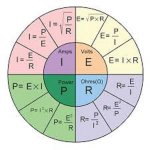Hello,
I have a question regarding finding loads for a building that has a 120/208V 3 Phase 4 wire 200 amp service. I am trying to find the wattage and amperage calculations for the following pieces of equipment and am looking for assistance in doing so. The pieces of equipment are as followed....
One 15 kw 480v HVAC Unit
One 10 kw 480v water heater
16 100 watt 277v LED light fixtures
4 40 watt LED 480v parking lot light fixtures
2 460v 3 phase squirrel cage 25 horsepower motors
2 277v specialty receptacles rates at 30 amps each
6 277v specialty receptacles rated at 600 watts each
Thanks for any help provided!
I have a question regarding finding loads for a building that has a 120/208V 3 Phase 4 wire 200 amp service. I am trying to find the wattage and amperage calculations for the following pieces of equipment and am looking for assistance in doing so. The pieces of equipment are as followed....
One 15 kw 480v HVAC Unit
One 10 kw 480v water heater
16 100 watt 277v LED light fixtures
4 40 watt LED 480v parking lot light fixtures
2 460v 3 phase squirrel cage 25 horsepower motors
2 277v specialty receptacles rates at 30 amps each
6 277v specialty receptacles rated at 600 watts each
Thanks for any help provided!

